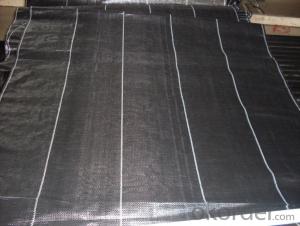PP Woven Fabric/ Groundcover/ Weed Control Fabric
- Loading Port:
- China main port
- Payment Terms:
- TT OR LC
- Min Order Qty:
- 5000 m²
- Supply Capability:
- 1000000 m²/month
OKorder Service Pledge
OKorder Financial Service
You Might Also Like
Geotextiles are composed from synthetic polypropylene/polyester fibres through a mechanical process of needling the fabric and adding, when necessary, a thermo fused process, resulting in a uniform porous structure with excellent tensile strength and chemical deterioration. Type: 1. Wovens & knitted: use various fibre types (e.g. monofilament, multi-filament, split extruded film) in different combinations. 2. Non-wovens: staple or continuous fibres that are heat treated or needlepunched to “fix” fibres relative to each other.
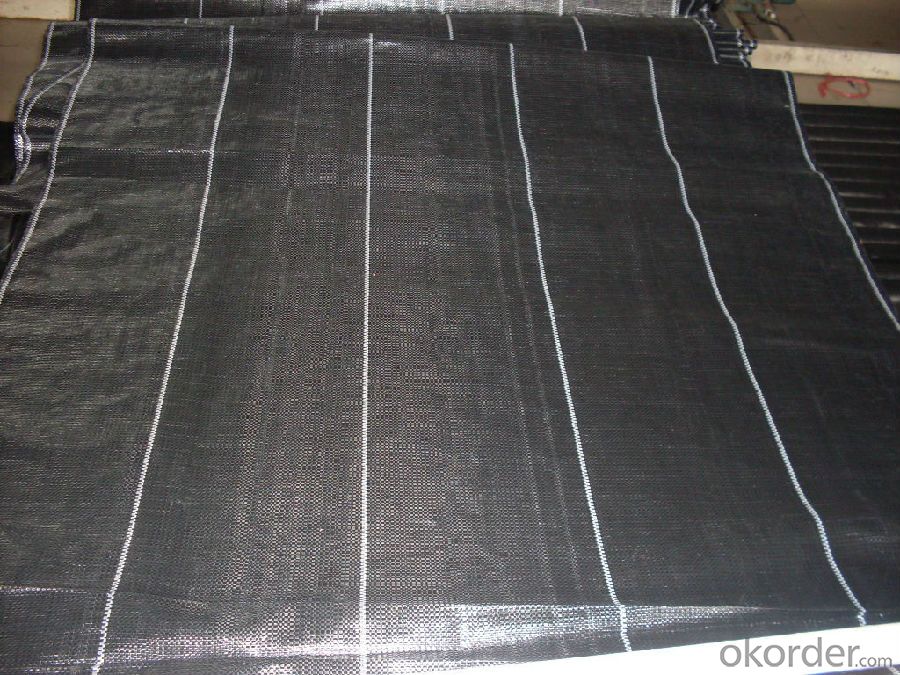
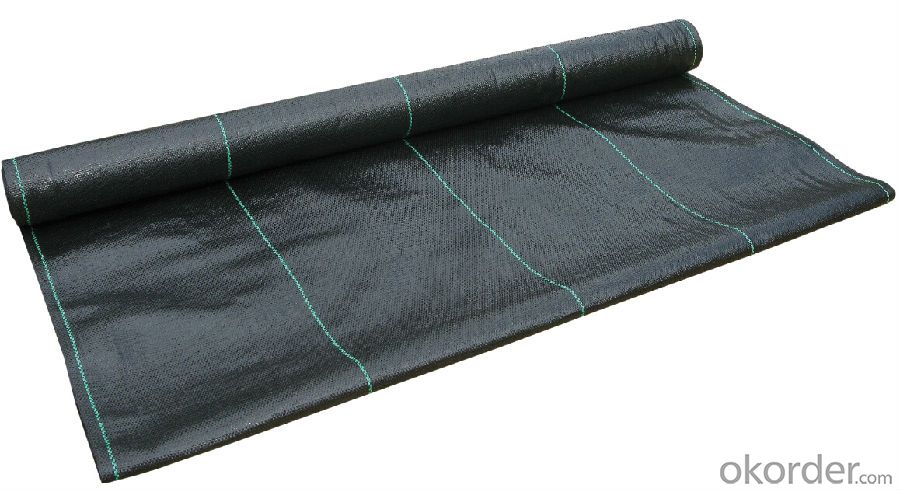
1) Weight / Mass: 75g/m2-400g/m2 .
2) Width: Within 8 m (1m-8m)
3) Length: 50m-100m/roll (as request)
4) Material: PP
5) Color: Black , white , grey, others
6) Certificate: CE/ISO9001, ISO14001 .
7) Manufacturing method: nonwoven / woven.
8) The biggest geotextile manufacturer/factory in China for many years . The equipment is introduced from Germany.
9) This geotextile can be made of polypropylene (PP).
10) The mass is available from 75g/m² to 400g/m² and the width available from 1.0m-8m, monolayer or multilayer (reinforcement geotextiles), long fiber or short fiber.
11) Color: all kinds of color are available. The annual production ability is 10 million square meters.
12) The fabric can also be heat treated by infrared at customer's requirements. Our geotextile are UV stabilized to give protection against aging under exposure to natural ultra-violet light.
Application
Major functions: Separation, filtration, drainage, reinforcement, protection, and liquid barrier
1) Filtration
The filtration layer of the dykes, river canal, seacoast, concrete slope, retaining walls. At the same time of preventing the clay granule from passing, it allows the water and the gas pass through freely.
2) Separation:
The isolation of the railway dregs and the roadbed, roadbed and the soft base, surface of the airdrome and parking lot and the groundsill, different dam materials. It isolates the soil and the gravel of two kinds different granule pathway from the groundsill or other buildings.
3 )Reinforcement:
The highway, railway, soil-stone dam, breakwater, airport, backfill soil of retaining wall, slope protection, etc in which distributes the earth stress, prevents the side-displacement of the earth body and improves the earth body stability.
4 )Protection
It prevents the bank from being washed out, protects the bank and the bottom, prevents the water and soil from being washed away.
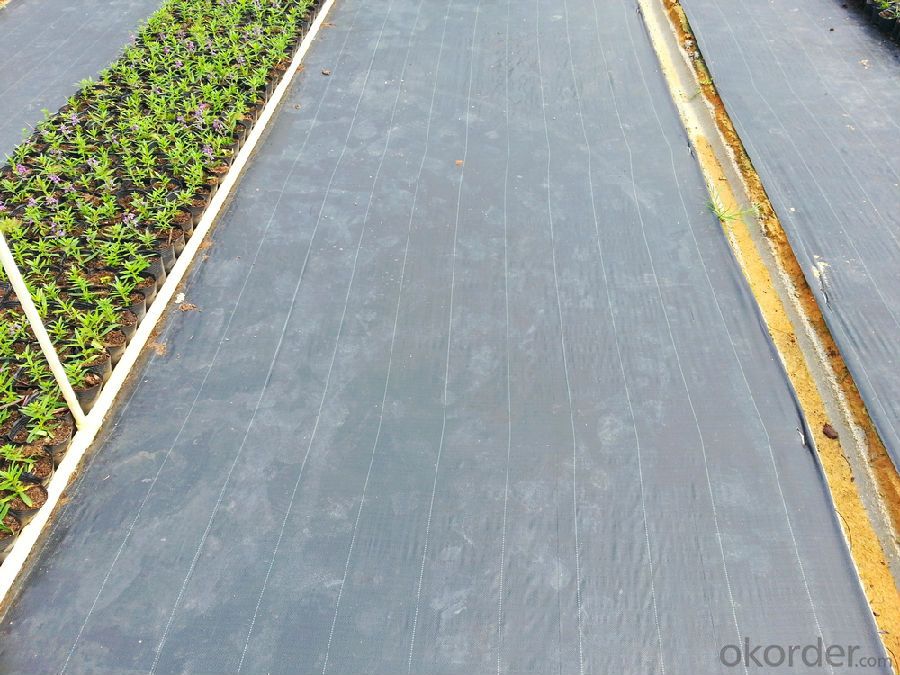
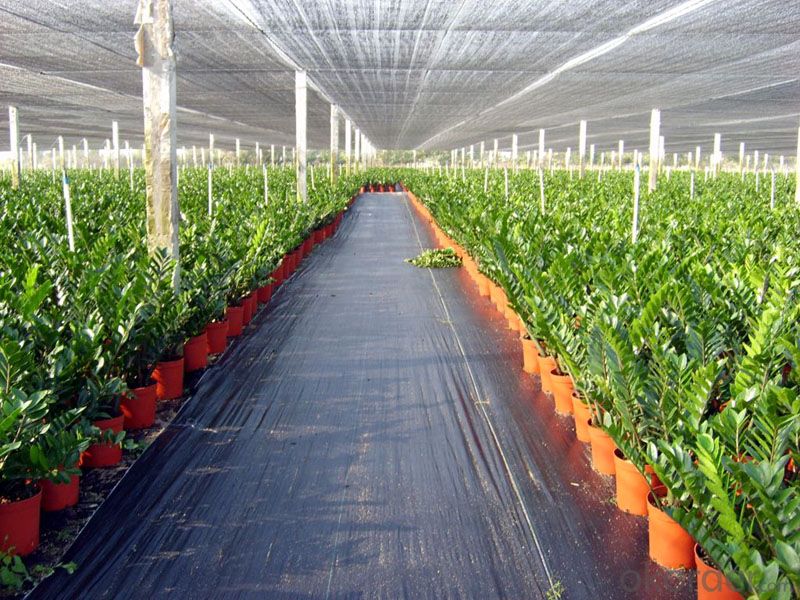
Q1: What is your minimum order quantity?
A:The minimum order quantity is 5000 ,but it is negotiable.
Q2:What is your payment terms?
A: T/T,Western Union,Paypal,L/C...
Q3:What is your delivery time?
A:Production time usually costs 2-20 days.
Waiting to cooperate with you!
- Q:Why the durability of filament geotextile is relatively strong
- The reason for raw materials
- Q:Can geotextiles be used for livestock waste management?
- Yes, geotextiles can be used for livestock waste management. Geotextiles are permeable fabrics that can be used to control erosion, filter water, and separate different materials. In the case of livestock waste management, geotextiles can be employed to contain and filter waste runoff, prevent soil contamination, and improve overall water quality. By providing an effective barrier, geotextiles help in preventing the leaching of harmful substances into the environment, thus aiding in the proper management of livestock waste.
- Q:How do geotextiles help in stabilizing embankments?
- Geotextiles help in stabilizing embankments by providing reinforcement and erosion control. They are placed within the soil layers, acting as a barrier to prevent soil movement and promote stability. The geotextiles increase the shear strength of the soil, reducing the risk of slope failure. Additionally, they allow for water drainage while preventing the loss of fine particles, therefore minimizing erosion and maintaining the integrity of the embankment.
- Q:Can geotextiles be used in temporary erosion control applications?
- Yes, geotextiles can be used in temporary erosion control applications. They are often used to stabilize soil and prevent erosion in construction sites, temporary roadways, and other areas where erosion control is needed temporarily. Geotextiles can effectively prevent soil erosion by providing a barrier that holds soil particles in place while allowing water to pass through.
- Q:Where is the geotextile
- Permeable geotextile is generally used in the railway roadbed reinforcement, road maintenance, sports museum, dam protection, water structural isolation, then hole, coastal beach, reclamation, environmental protection, landscaping and other projects.
- Q:Road Central isolation belt (5 m wide) Drainage No design Waterproof geotextile laying and gravel blind ditch, are design flaws?
- Should be it, the general design will have this. If you need to contact me, see the information
- Q:How do geotextiles aid in the reduction of settlement-induced cracking?
- Geotextiles aid in the reduction of settlement-induced cracking by providing a stable and reinforced base for construction projects. They distribute the load and enhance the soil's bearing capacity, preventing excessive settlement and subsequent cracking in the structure.
- Q:How do geotextiles help with filtration in stormwater management?
- Geotextiles play a crucial role in stormwater management by providing filtration and erosion control. They act as a barrier, allowing water to pass through while capturing sediment and pollutants. This helps to improve water quality and prevent contamination of natural water bodies. Additionally, geotextiles can enhance the performance of stormwater systems by reducing clogging and promoting efficient drainage.
- Q:How do geotextiles help in reducing the risk of slope failures?
- Geotextiles help in reducing the risk of slope failures by providing reinforcement and stabilization to unstable slopes. These materials are placed within the slope to increase its strength and prevent erosion. Geotextiles also help in promoting water drainage and filtration, which reduces the build-up of hydrostatic pressure within the slope. Overall, geotextiles enhance the stability of slopes and mitigate the potential for landslides or slope failures.
- Q:How do geotextiles help with ground improvement?
- Geotextiles help with ground improvement by providing reinforcement, filtration, and separation functions. They enhance soil stability, prevent erosion, and improve drainage, ultimately enhancing the overall performance and durability of the ground.
1. Manufacturer Overview |
|
|---|---|
| Location | |
| Year Established | |
| Annual Output Value | |
| Main Markets | |
| Company Certifications | |
2. Manufacturer Certificates |
|
|---|---|
| a) Certification Name | |
| Range | |
| Reference | |
| Validity Period | |
3. Manufacturer Capability |
|
|---|---|
| a)Trade Capacity | |
| Nearest Port | |
| Export Percentage | |
| No.of Employees in Trade Department | |
| Language Spoken: | |
| b)Factory Information | |
| Factory Size: | |
| No. of Production Lines | |
| Contract Manufacturing | |
| Product Price Range | |
Send your message to us
PP Woven Fabric/ Groundcover/ Weed Control Fabric
- Loading Port:
- China main port
- Payment Terms:
- TT OR LC
- Min Order Qty:
- 5000 m²
- Supply Capability:
- 1000000 m²/month
OKorder Service Pledge
OKorder Financial Service
Similar products
New products
Hot products
Related keywords
